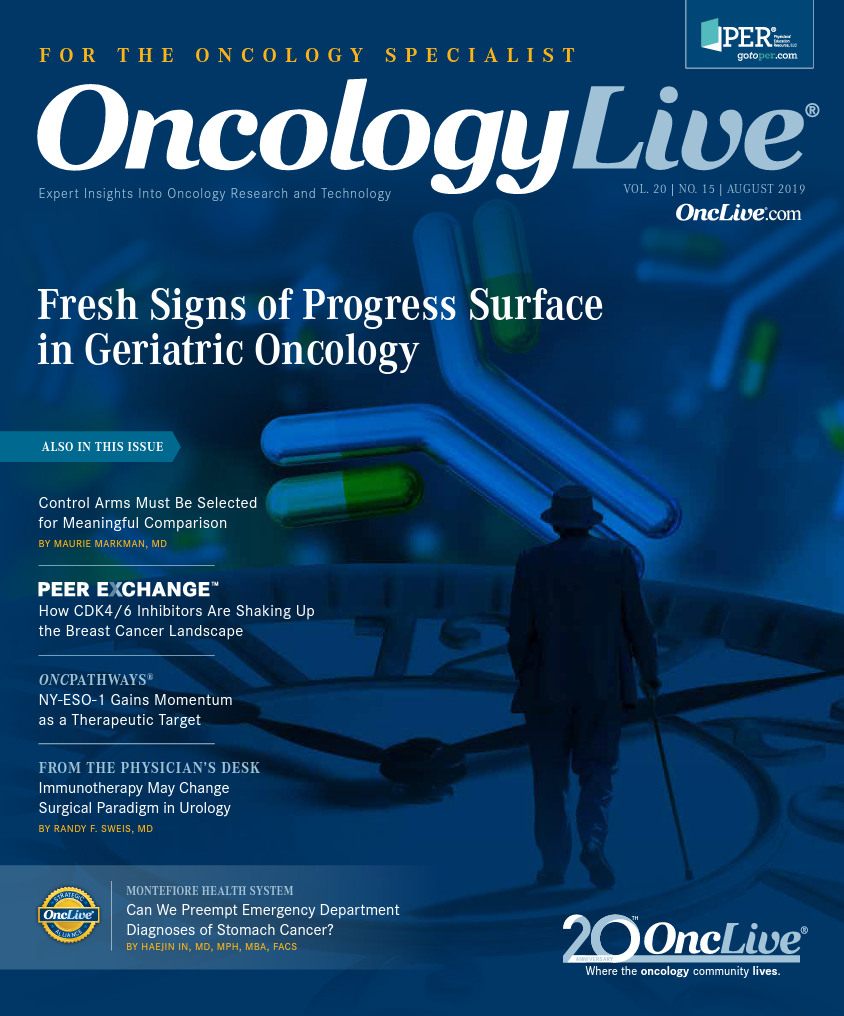Publication
Article
Oncology Live®
Checkpoint Inhibitors Vault Into Frontline Settings Across Tumor Types
Author(s):
By the end of 2018, the 57 oncology drugs launched from 2014 to 2018 had gained 89 indications across 23 cancer types. These new agents included numerous checkpoint inhibitors, which saw tremendous uptake based on their ability to dramatically improve patient outcomes.
By the end of 2018, the 57 oncology drugs launched from 2014 to 2018 had gained 89 indications across 23 cancer types. These new agents included numerous checkpoint inhibitors, which saw tremendous uptake based on their ability to dramatically improve patient outcomes.
The approvals of pembrolizumab (Keytruda) and nivolumab (Opdivo) led to the treatment of 2403 unique patients in 2014, a number that climbed to 212,473 in 2018, based on the additional approvals of atezolizumab (Tecentriq), avelumab (Bavencio), durvalumab (Imfinzi), and cemiplimab (Libtayo), according to a report by the IQVIA Institute for Human Data Science (Figure 1).
The report catalogs the clinical adoption and market development of multiple new agents in oncology, placing special emphasis on anti—PD-1/ PD-L1 pathway drugs. Additionally, the authors note that anti–PD-1/PD-L1 agents have moved rapidly into the frontline for metastatic non–small cell lung cancer (NSCLC), metastatic melanoma, and metastatic renal cell carcinoma (Figure 2).
In the case of metastatic melanoma, anti—PD-1/ PD-L1 agents in the fourth quarter of 2018 were used equally in frontline and later settings, or in excess of 70% of cases, according to IQVIA. By the end of 2018, 55% of first-line treatments for patients with newly diagnosed disease and 59% of later lines of therapy for metastatic NSCLC involved use of one of the approved anti–PD-1/PD-L1 drugs. Together, these agents now account for 77% of all lines of therapy in metastatic melanoma.
The 2 drugs approved earliest in the anti— PD-1/PD-L1 class, pembrolizumab and nivolumab, account for more than 90% of all patients treated with checkpoint inhibitors and have the widest number of approved uses. By the close of 2018, there were over 20 approved uses of anti– PD-1/PD-L1 treatments in a variety of tumors, according to IQVIA.
Similarly, the treatment of breast cancer has changed with the introduction and rapid uptake of CDK4/6 inhibitors, which have rapidly become established in the United States and Europe. CDK4/6 inhibitors target enzymes CDK4 and CDK6, interrupting cell division and cell growth.
Although CDK4/6 inhibitors were approved earlier in the United States, the European Union 5 (EU5)— France, Germany, Italy, Spain, and the United Kingdom—have reached similar rates of use, with 14.5 patients per 100,000 in the EU5 and 14.2 in the United States. In 2018, the number of patients treated with these drugs nearly tripled in the top 5 European countries compared with the number in 2017, increasing by just 7% in the United States in 2018, where these agents were well established 2 years earlier.
Global oncology trends 2019. IQVIA Institute for Human Data Science website. iqvia.com/institute/reports. Published May 2019. Accessed July 16, 2019.































%20(2)%201-Recovered-Recovered-Recovered-Recovered-Recovered-Recovered-Recovered-Recovered-Recovered-Recovered-Recovered-Recovered-Recovered-Recovered-Recovered-Recovered-Recovered.jpg?fit=crop&auto=format)
%20(2)%201-Recovered-Recovered-Recovered-Recovered-Recovered-Recovered-Recovered-Recovered-Recovered-Recovered-Recovered-Recovered-Recovered-Recovered-Recovered-Recovered-Recovered.jpg?fit=crop&auto=format)
